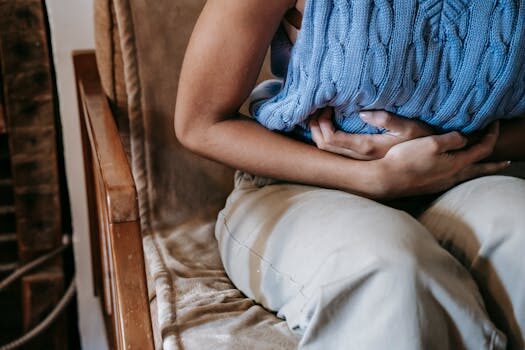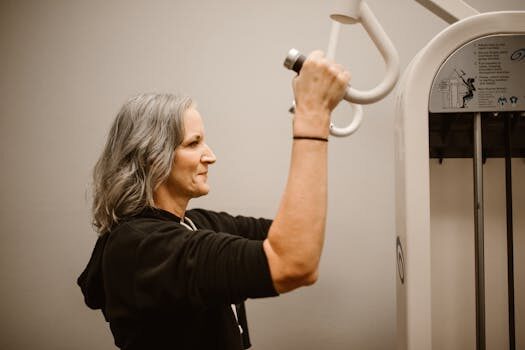Is ovulation cramping normal?

Ovulation pain, commonly known as mittelschmerz, can be a perplexing experience for many women. This discomfort often raises the question: Is ovulation cramping normal? Understanding the nature of this pain and its implications is essential for women's health.
In this article, we will delve into the various aspects of ovulation pain, from its causes to how to manage it effectively. We will also answer some frequently asked questions to provide a comprehensive overview.
What is ovulation pain?
Ovulation pain refers to the discomfort some women feel during the ovulation phase of their menstrual cycle. This pain typically occurs around day 14 in a standard 28-day cycle when an egg is released from the ovary. The sensation can range from mild twinges to sharp, localized pain.
During ovulation, some women may experience other symptoms alongside the pain, such as changes in cervical mucus or slight vaginal bleeding. These signs indicate the body is in its fertile window, which is crucial for those trying to conceive.
Understanding ovulation cramps is critical for differentiating between normal bodily functions and symptoms that may signal a health issue. While many women ignore these cramps, recognizing their patterns can help in fertility awareness.
Is ovulation cramping normal?
Yes, is ovulation cramping normal? for many women. It is typically considered a benign occurrence. However, the intensity and frequency can vary significantly among individuals. For some, it may be a mild discomfort, while others might experience sharper, more pronounced pain.

The pain usually resolves within a few hours to a couple of days. If symptoms persist or worsen, consulting a healthcare provider is advisable to rule out potential underlying conditions.
Many women find that tracking their menstrual cycles helps them understand their ovulation patterns better. This practice can provide insights into the timing and intensity of the pain each month.
What are the symptoms of ovulation pain?
Symptoms of ovulation pain can vary, but the most common include:
- Sharp or dull pain on one side of the abdomen
- Light spotting or vaginal discharge
- Nausea or mild gastrointestinal discomfort
- Increased cervical mucus production
These symptoms typically occur around the time of ovulation and can last anywhere from a few minutes to 48 hours. Noting these symptoms can help in understanding your body’s unique rhythm and hormonal changes throughout the menstrual cycle.
What causes ovulation pain?
Ovulation pain is primarily caused by the release of an egg from the ovary. As the follicle ruptures, it can lead to bleeding or irritation in the abdominal cavity, resulting in discomfort. This process is accompanied by hormonal changes that can also influence pain perception.
Other factors that may contribute to ovulation pain include:

- Ovarian cysts: These fluid-filled sacs can develop on the ovaries and, in some cases, cause discomfort during ovulation.
- Endometriosis: This condition can lead to painful ovulation due to the presence of endometrial tissue outside the uterus.
- Pelvic inflammatory disease: Infections in the pelvic area can exacerbate ovulation pain.
Understanding these causes can assist in differentiating between regular ovulation pain and symptoms that may require medical attention.
How long does ovulation pain last?
Typically, ovulation pain lasts from a few minutes to a couple of days. Most women report that the pain subsides within 24 hours. This duration is often consistent with the timing of ovulation within the menstrual cycle.
If the pain lasts longer than a few days or intensifies, it may be a sign that something else is happening in the body. In such cases, a consultation with a healthcare provider is recommended to address any underlying concerns.
Tracking the length of ovulation pain can also help women understand whether their symptoms are typical or if further evaluation is needed.
How can you manage ovulation pain?
Managing ovulation pain effectively often involves home remedies and over-the-counter treatments. Here are several strategies:
- Over-the-counter pain relievers: Nonsteroidal anti-inflammatory drugs (NSAIDs) like ibuprofen can alleviate discomfort.
- Heat therapy: Applying a warm compress to the lower abdomen can help soothe cramping.
- Herbal teas: Certain herbal teas may have soothing effects on menstrual discomfort.
Additionally, maintaining a healthy lifestyle through diet and exercise can alleviate some menstrual-related symptoms, including ovulation pain.

When should you see a doctor about ovulation pain?
While ovulation pain is generally harmless, it's essential to know when to seek medical advice. Consider consulting a healthcare provider if:
- The pain is severe and debilitating
- You experience symptoms like fever, vomiting, or heavy bleeding
- The pain lasts longer than a few days
These symptoms may indicate an underlying condition that requires further investigation and possible treatment.
Questions related to ovulation pain
Do ovulation cramps mean you are fertile?
Yes, experiencing ovulation cramps can indicate that you are in your fertile window. These cramps signal that an egg has been released and that ovulation is occurring, which is the optimal time for conception.
However, it’s important to note that not all women experience ovulation pain. Therefore, relying solely on cramps for fertility awareness may not be sufficient. Tracking other signs of ovulation, such as changes in cervical mucus, can provide a clearer picture of fertility.
Why am I cramping so much after ovulation?
Cramping after ovulation can occur due to various reasons. One possibility is that the body is still adjusting to the hormonal fluctuations that accompany the ovulation process. Additionally, some women may experience post-ovulation cramping due to implantation if they have conceived.
Other causes may include the development of ovarian cysts or underlying conditions such as endometriosis. If cramping after ovulation is persistent or severe, it might be wise to consult a healthcare provider for further evaluation.

Are ovulation cramps a good indicator you ovulated?
Ovulation cramps can be a good indicator of ovulation, as they often occur around the time an egg is released. However, not all women experience these cramps. Therefore, while they can be an indicator, they should be used in conjunction with other ovulation signs for more accuracy.
Tracking ovulation through methods such as basal body temperature and cervical mucus observation can provide a more comprehensive understanding of your cycle.
Does ovulation cramping mean an egg released?
Yes, ovulation cramping typically indicates that an egg has been released from the ovary. This pain is part of the ovulation process and reflects the physical changes occurring within the body.
Those who experience ovulation cramps should consider this a sign of peak fertility, making it a crucial time for those trying to conceive.